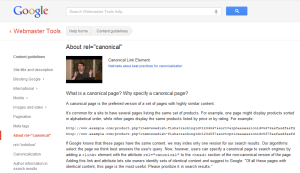Most corporate blogs are ghost towns, in terms of both content and reader engagement. Abandoned blogs litter the Web, making the businesses that own them look lazy, uncommitted and anything but current.
The reality is that keeping a blog fresh involves more time and effort than most brands are willing to invest, which only makes the few that do succeed look even better. So what are they doing that most others are not?
Start slowly, perfect your pace
The best blogs are updated pretty often. A 2009 study found that blogs with high Technorati Authority rankings post about 300 times more often than those with low Authority rankings and keeping a blog fresh is the only way to grow readership, boost conversions and develop thought leadership.
But getting there takes long-term planning and discipline. Don’t be the showoff that starts with a sprint and fails to finish.

The Church Times blog is written and drawn by Church Times cartoonist Dave
Instead, begin with a posts-per-week goal that you’re certain to hit before you ramp it up. During this time, refine your related activities — content distribution, baselines for measurement, trending and reporting — to get an idea of the impact a blog post can have on your existing marketing efforts.
Like any good publisher, you’ll need an editorial calendar. Plan several weeks in advance but realise that you’ll also need the flexibility to blog about hot topics as they come up. Use calendars that integrate with your existing project management tools whenever possible.
Basecamp is an excellent option, allowing multi-user commenting, attachment uploads and task assignments. If you use WordPress, you can choose from a healthy array of plugins designed specifically for multi-author blog management, including scheduling, calendar and task reminder tools.
Some of the most prolific bloggers I know simply use Excel spreadsheets or Google Docs. Don’t get lost in selecting between shiny objects: pick something and focus on the planning process.
Reject often
Cultivating a vibrant blog with a diversity of perspectives doesn’t mean those perspectives can’t be polished up, or that all content should be considered equal. An editor’s job often entails just as much rejection as it does approval.
Your blog is a highly visible, externally facing extension of your brand, and it requires a measure of selectivity. Establish official content guidelines and an approval process that your employees can reference during content creation, and use this to inform and explain your approval decisions.
Everyone at your company must understand (and you should champion) the fact that your blogging efforts need to integrate with business goals and content that doesn’t fit won’t be published — no hard feelings.
Nothing is good enough without editing
Dumb typos are the Achilles heel of otherwise valuable corporate content. As political journalist Theodore White said, “There are two kinds of editors, those who correct your copy and those who say it’s wonderful.”
MS Word, or another word processor, should be used until the post is ready to publish: not only do you then have backup copies but Word’s editing features are more robust than those of WordPress and most other platforms.
Adopt a mutually-agreed versioning system and append your initials and the date to the latest version, then share via Dropbox or Google Docs. Once finalised, mark the version as ‘final’ (in MS Word) and place the post in a folder separate from previous drafts (so you avoid confusing them).
Always know what you’re asking for
“What action do I want my visitors to take after reading this post?”. This question should be paramount throughout every stage of the content-planning process. Whatever your primary goal, reading the post should entice visitors to click on a related call-to-action you’ve intentionally placed in their path.
The call-to-action can be anything from links to related posts, to a booking page for an upcoming webinar you’re hosting. If you can’t think of a logical next step you’d like readers to take, the post probably doesn’t belong in front of them.
Guest author Ian Greenleigh is social media manager at Bazaarvoice, the market and technology leader in hosted social commerce applications. He oversees and contributes to The Social Commerce Blog .




Recent Comments